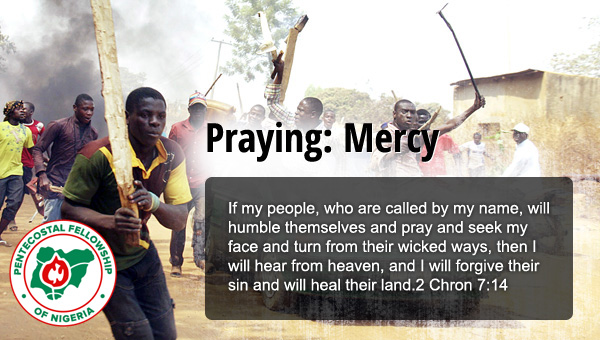News
BOKO HARAM- HISTORICAL PERSPECTIVES
 The AFP report below refers. KANO ( AFP) – Boko Haram’s leader said he has created an Islamic caliphate in a northeast Nigeria town seized by the insurgents earlier this month, in a video obtained by AFP on Sunday.
The AFP report below refers. KANO ( AFP) – Boko Haram’s leader said he has created an Islamic caliphate in a northeast Nigeria town seized by the insurgents earlier this month, in a video obtained by AFP on Sunday.
“Thanks be to Allah who gave victory to our brethren in (the town of) Gwoza and made it part of the Islamic caliphate,” Abubakar Shekau said in the 52-minute video.
He declared that Gwoza, in Borno state, now has “nothing to do with Nigeria”.
- See more
The pasted extract below is from LAMPSTANDLETTERS NO 19, FEBRUARY 2000 and is for understanding the Fulani-Kanuri-Arab Islamic fundamentalist conspiracy and necessary focused spiritual action.
THE ARAB CONNECTION – HISTORICAL PERSPECTIVE
The Fulani were among the first people to embrace Islam in Western Sudan. As traders, Pilgrims and pastorialists, they spread the Islamic faith wherever they went, By early Northern Nigeria and established the largest empire in the Caliphate under the leadership of Usman Dan Fodio. Determined on pushing their conquest coastward until they could “dip the Koran in the sea” the Fulani forces marched into the heart of the Yoruba empire of Oyo until they were halted and repulsed by Ibadan in 1840 (Buah 1973: 114)
The (Madhist) fundamentalists came into Nigeria through Bornu in 1894 from Sudan through a man named Rabah Jibrella, slave of Suleman the son of the famous slave trader (Zuber Pasher) who was deported from Cairo Egypt to Sudan in 1878. Rahab completely occupied the Bornu Emirate until he was killed in 1900 by the French troops in the battle of Kusseri.
The next main courier of fundamentalist Islam was Hayatu Ibn Saheed, great grandson of Usman Dan Fodio whose father moved to Yola when he lost out to the 3rd Sultan Atiku, his cousin. Hayatu became a Madhist and sent a message to Mahdi Mohammed at Omdurman Sudan offering allegiance. The Mahdi assigned Hayatu the whole territory of Adamawa and Mandara Fulani in the present Bornu, Yobe and Adamawa states and neighboring Cameroon.
In 1902, Fulani forces under the fugitive Sultan of Sokoto, Attahiru I were defeated by the British at Burmi near Gombe. Attahiru had left Sokoto before the arrival of the British to avoid being subjected to the “Christian/British infidels”. Consequently large bodies of Fulani migrated from Nigeria to Sudan and settled at Fellata (Takari) on the Blue Nile and as for as Hajer (S.Arabia), Palestine, Syria, Turkey, Iraq, Ethiopia and Eritrea (where they all are till today).
The flight of Sultan Attahiru I from Burmi to Sudan was described as his “Hijera” (Holy flight) after Prophet Mohammed’s flight to Mecca from medina. The battle at Burmi was described as a “Jihad” and the Sultan Attahiru himself as a Mahdi (martyr).
Many Princes and Emirs of Northern Nigerian towns including Katagum, Missau, Hadejia, Gombe, Bauchi & Adamawa joined him in the flight and settlement in Sudan.
According to legends and prophecies, the caliphate believe that all Fulani will one day unite as a nation at Burmi (near Gombe, Gombe State, Nigeria) and march to the Nile valley and Mecca (through Maiduguri?). In 1921, a Fulani migrant in the Sudan Fellata called “Mai Wurno” told the Emir of Kastina that armed with a flag from Mecca, he will lead a jihad to Nigeria to drive the British out.
Pilgrim activities (from Nigeria) was another factor that led to the concentration of anti-Christian Fulani/Kanuri propagandist in Egypt, Sudan, on Red Sea, the Hajera and the Takaris/Felletas of these places. The Fulanis and Kanuris are at the arrowhead and believe they will lead a jihad into Nigeria one day.
“The political ambition of the Caliphate Fulani to rule is not dead and will not die” thus reported an intelligence report some seventy years ago. Also, the Maguni (old Bornu El-Kanemi kingdom) though scattered since 1810 from Yemen to the Atlantic have never ceased hoping to regain their Bornu kingdom. Thus the Caliphate Fulani and Bornu Kanuri up to date believe they are “born to rule” and draw active support from their kinsmen and supporters from North Africa up to Saudi Arabia. Writing in 1924, the progenitor of the Sanusshi – Tarrika Islamic political propaganda sect, Sidi Ahmed wrote, “our purpose is to obtain the sovereignty of all the land between Egypt and Malawi”. Even though the British defeated the Caliphate in 1902, the colonialists “favoured Islam, often consciously, to the detriment of Christianity” (see Boer 1988). But the Caliphate has controlled every regime in Nigeria except the present one. That is the political aspect of the present situation.
DEALING WITH THE HORSE AND ITS RIDER
How then do we respond to the matters arising? II Cor. 10:4-5 tells us clearly that the weapons of our warfare are not carnal. See also Zechariah 4:6. The following biblical principles constitute strategic warfare in dealing with the horse and its rider: -
- Evangelism and Missions: the declaration of the Prince of Peace to all men. Zechariah 9:9-10 and Isaiah 9:2-7 link the cutting off of the chariot the horse and battle bow with the declaration of the Prince of Peace.
- Related to above is continual prophetic prayers declaring the Lordship of Christ over the nations Psalm 2, Psalm 24, Psalm 76, Psalm 110, and Micah Chapter 1, among others are relevant in this regards.
- The next major strategy is to “contend with the horses” (Jer. 12:5a) in sustained prayers and intercessions to provoke God by His Spirit to rise against the horse and its riders through.
- Striking every horse with confusion and its riders with madness. Zech 12:4
- Dealing with them as He did to Pharaoh’s host Exodus 14:4-9, 24:25, Isaiah 43:17
- Breaking/Cutting off the battle bow and weapons of war by His rebuke Ps. 46:9, 76:2-6.
- Shaking Islam like He shook communism by natural and supernatural means Haggai 2:21-22. Amen.
“O house of Jacob, come and let us walk in the light of the Lord” Isaiah 2:5



